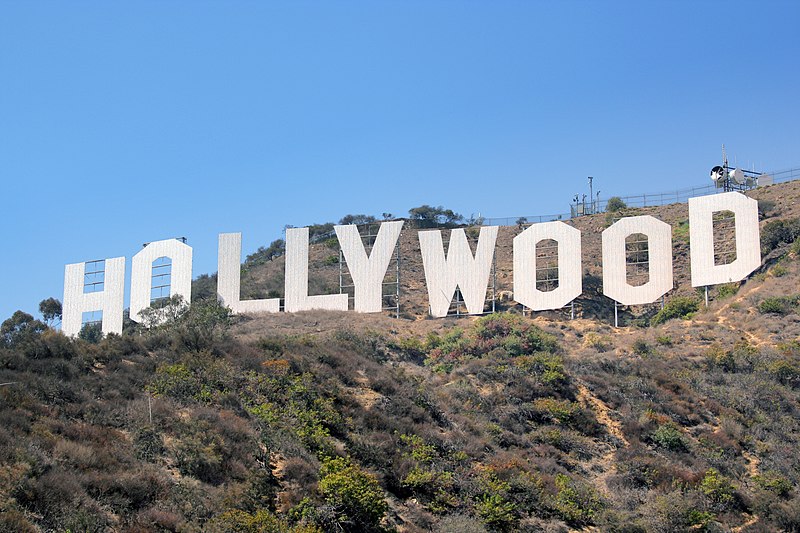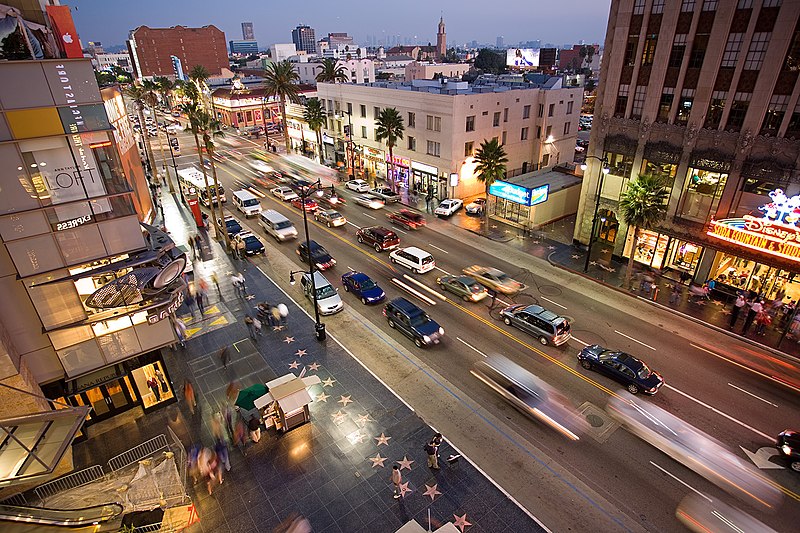
Hollywood is a district in Los Angeles, California, United States situated west-northwest of downtown Los Angeles. Due to its fame and cultural identity as the historical center of movie studios and movie stars, the word Hollywood is often used as a metonym of American cinema. Today, much of the movie industry has dispersed into surrounding areas such as the Westside neighborhood, and the San Fernando and Santa Clarita Valleys, but significant auxiliary industries, such as editing, effects, props, post-production, and lighting companies remain in Hollywood, as does the backlot of Paramount Pictures.

On February 16, 2005, California Assembly Members Jackie Goldberg and Paul Koretz introduced a bill to require California to keep specific records on Hollywood as if it were independent, although it is not the typical practice of the City of Los Angeles to establish specific boundaries for districts or neighborhoods. For this to be done, the boundaries were defined. The bill was unanimously supported by the Hollywood Chamber of Commerce and the Los Angeles City Council. Assembly Bill 588 was approved by the Governor of California on August 28, 2006, and now the district of Hollywood has official borders. The border can be loosely described as the area east of West Hollywood, south of Mulholland Drive, Laurel Canyon, Cahuenga Boulevard, and Barham Boulevard, and the cities of Burbank and Glendale, north of Melrose Avenue and west of the Golden State Freeway and Hyperion Avenue. This includes all of Griffith Park and Los Feliz[citation needed] – two areas that were hitherto considered separate from Hollywood by most Angelenos. The population of the district, including Los Feliz, as of the 2000 census was 123,436 and the median household income was $33,409 in 1999.
As a district within the Los Angeles city limits, Hollywood does not have its own municipal government. There was an official, appointed by the Hollywood Chamber of Commerce, who served as an honorary "Mayor of Hollywood" for ceremonial purposes only. Johnny Grant held this position from 1980 until his death on January 9, 2008. However, no replacement has ever been named after Grant's death.

In 1853, one adobe hut stood in Nopalera, named for the Mexican Nopal cactus indigenous to the area. By 1870, an agricultural community flourished in the area with thriving crops of many common and exotic varieties. The area was known to these residents as the Cahuenga Valley, after the pass in the Santa Monica Mountains immediately to the north. Soon thereafter, land speculation led to subdivision of the large plots and an influx of homeowners.
In spite of the area's short history, it has been filled with events driven by optimistic progress. The name Hollywood was coined by H. J. Whitley, the "Father of Hollywood".Whitley arranged to buy the 500-acre (2.0 km2) E.C. Hurd ranch and disclosed to him his plans for the land. They agreed on a price and Hurd agreed to sell at a later date. Before Whitley got off the ground with Hollywood, plans for the new town had spread to General Harrison Gray Otis, Mr Hurd's wife, Mrs. Daeida Wilcox, and numerous others through the mill of gossip and land speculation.
Daeida learned of the name Hollywood from her neighbor in Holly Canyon (now Lake Hollywood), Ivar Weid, a prominent investor and friend of Whitley's. She recommended the same name to her husband, H. H. Wilcox. On February 1, 1887, Harvey filed a deed and map of property he sold with the Los Angeles County Recorder's office. Harvey wanted to be the first to record it on a deed. The early real-estate boom busted that same year, yet Hollywood began its slow growth.

By 1900, the region had a post office, newspaper, hotel, and two markets. Los Angeles, with a population of 102,479 lay 10 miles (16 km) east through the vineyards, barley fields, and citrus groves. A single-track streetcar line ran down the middle of Prospect Avenue from it, but service was infrequent and the trip took two hours. The old citrus fruit-packing house would be converted into a livery stable, improving transportation for the inhabitants of Hollywood.
The famous Hollywood Hotel, the first major hotel in Hollywood, was opened in 1902, by H. J. Whitley, then President of the Los Pacific Boulevard and Development Company, of which he was a major shareholder. Having finally acquired the Hurd ranch and subdivided it, Whitley built the hotel to attract land buyers, and was eager to sell these residential lots among the lemon ranches lining the foothills. Flanking the west side of Highland Avenue, the structure fronted on Prospect Avenue, which, still a dusty, unpaved road, was regularly graded and graveled. The Hotel was to become internationally known and was the center of the civic and social life and home of the stars for many years.His company was developing and selling one of the early residential areas, the Ocean View Tract. Whitley did much to promote the area. He paid many thousands of dollars for electric lighting, including bringing electricity and building a bank, as well as a road into the Cahuenga Pass. The lighting ran for several blocks down Prospect Avenue. Whitley's land was centered on Highland Avenue.

Hollywood was incorporated as a municipality on November 14, 1903. The vote was 88 for incorporation and 77 against. On January 30, 1904, the voters in Hollywood decided, by a vote of 113 to 96, for the banishment of liquor in the city, except when it was being sold for medicinal purposes. Neither hotels nor restaurants were allowed to serve wine or liquor before or after meals.
By 1910, because of an ongoing struggle to secure an adequate water supply, town officials voted for Hollywood to be annexed into the City of Los Angeles, as the water system of the growing city had opened the Los Angeles Aqueduct and was piping water down from the Owens River in the Owens Valley. Another reason for the vote was that Hollywood could have access to drainage through Los Angeles' sewer system. With annexation, the name of Prospect Avenue was changed to Hollywood Boulevard and all the street numbers in the new district changed.For example, 100 Prospect Avenue, at Vermont Avenue, became 6400 Hollywood Boulevard; and 100 Cahuenga Boulevard, at Hollywood Boulevard, changed to 1700 Cahuenga Boulevard.



